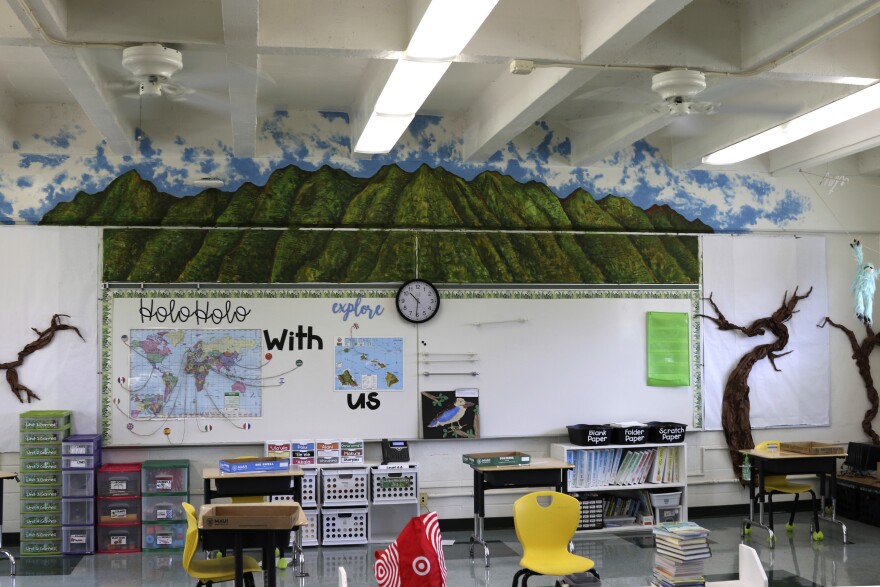About 10 years ago, the Hawaiʻi Department of Education was given $100 million to install air conditioning in 1,000 classrooms.
However, a recent report by the state auditor found that the department not only fell short of its goal, but also had serious lapses in accounting for the funds.
In total, about 800 classrooms actually had some type of air conditioning installed, and it cost about $105 million.
State Auditor Les Kondo explained that although the Department of Education was cooperative, it just did not have the information his office needed.
“I thought it was going to be a very straightforward, very quick report because our expectation was that the department was going to be able to provide us with a straightforward accounting of how the funds were spent — including the number of classrooms, the number of schools that were cooled under the initiative,” he said.
“But the department wasn't able to provide us with that accounting. They weren't able to provide us records. The reports that they gave us were inconsistent. They were contradictory. They included different numbers of classrooms, different schools, different dollar amounts.”

The auditor’s office tried to look through contract files for the needed information. However, in some cases, the paperwork was missing or incomplete. The department explained that it was largely due to staff turnover, as the person in charge of the project retired in 2017 and passed away in 2022.
According to the report, the department installed solar AC systems that often needed extensive repairs and did not work. It costs, on average, more than $120,000 a classroom.
Solar was selected for two reasons: DOE was mandated to be net-zero energy usage by 2035, and the electrical grids of schools could not handle the full capacity of regular AC units.
The solar AC units in classrooms were only supposed to run for five hours a day. So when schools reported performance issues about the units, if the unit was run for over five hours, the case would be closed without checking the unit.
It was later found that many of the units did not work from the start.
In one instance at Castle High School in Kāneʻohe, the department installed photovoltaic panels on a portion of the roof that was covered by the shade of a tree canopy, despite people at the school warning that it would not work.
Eventually, parents started donating window units to school classrooms, but it was not clear if the different electrical grids at the schools were equipped for the increased power use. So the department tried to standardize the program by evaluating the electrical grids of each school that wanted to install these window units.
However, according to the report, there was no significant follow-up as to which schools installed window units in their classrooms.
At the end of 2024, the department ended the window unit program.
Meanwhile, Hawaiʻi State Teachers Association President Osa Tui explained that many teachers and students are still stuck in hot classrooms.
“We have teachers who have 20, literally 20 fans blowing in the classroom just to try to get circulation, try to get cooler air in, but it's just oftentimes just blowing a lot of hot air around the classroom,” he said.
“When we have larger class sizes, that means you have more students in those classes, radiating heat and after they come back from recess and things like that, it makes for an extremely uncomfortable situation, and our children deserve better than that.”

Funds for the future?
Tui worried that the AC situation would discourage the Legislature from providing funds to the Department of Education in the future.
“The other issue is that it's fiascos like these where legislators then are like, 'I don't want to give the department any more money because they're just going to waste it,’” he said.
"Then other problems that desperately need to be solved, our classrooms are underfunded — and our teachers know what they could do if they just had some authority over some of those funds, but it's not gonna come. Like why give money to these people who are wasteful, who don't know how to spend it?”
Tui reminded parents to send their children back to school with a cold water bottle with ice to help cool down on hot days.
Department of Education Superintendent Keith Hayashi explained that his department will work on the lessons learned from the report.
“The initiative was launched with urgency and good intentions — responding to real heat challenges affecting our students and staff — but was undermined by flawed execution, inconsistent oversight, and ineffective systems at the time,” he said in a written statement.
“Our priority now is to apply the lessons from this report. That includes improving internal accountability, ensuring proper planning for future projects, and delivering on our commitment to safe, comfortable learning environments for all students. We are taking meaningful steps to improve and rebuild confidence in how we serve our schools and communities.”
Hawaiʻi Public Radio exists to serve all of Hawai’i, and it’s the people of Hawai’i who keep us independent and strong. Help keep us strong to serve you in the future. Donate today.






